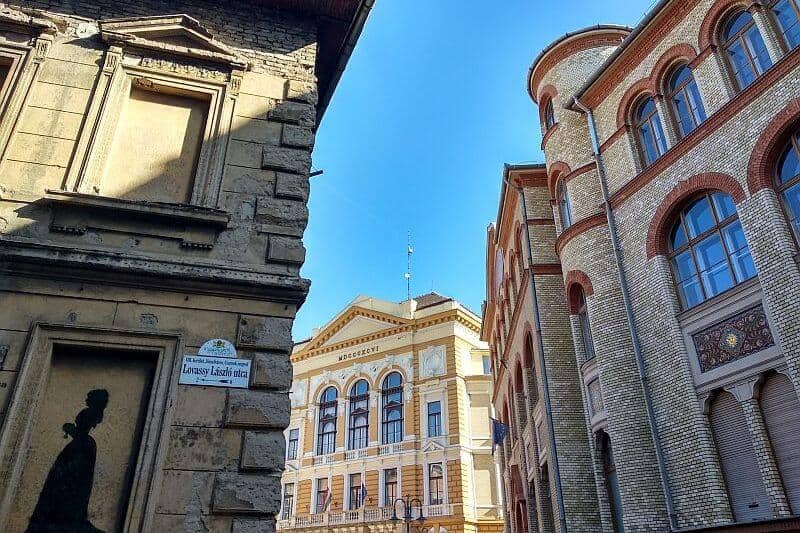
12 Sep District 8th: The Diverse and Multicultural Neighbourhood of Budapest
Prejudices die hard. My 55-year-old relative from the countryside arrived by taxi to visit me at my place in Rákóczi square in the 8th District the other day. After arrival, she immediately asked why the taxi driver winked at her when she told him her destination. My prompt response was that the wink expressed a surprise, meaning “Even at this age?”
Although prostitution was banned in the district more than a decade ago, public opinion still associates Rákóczi tér (square) and environs with being the den of all things bad. The stigma of the district being a nest of crime and prostitution dates back to Communist times when such activities were, of course, illegal but tolerated.
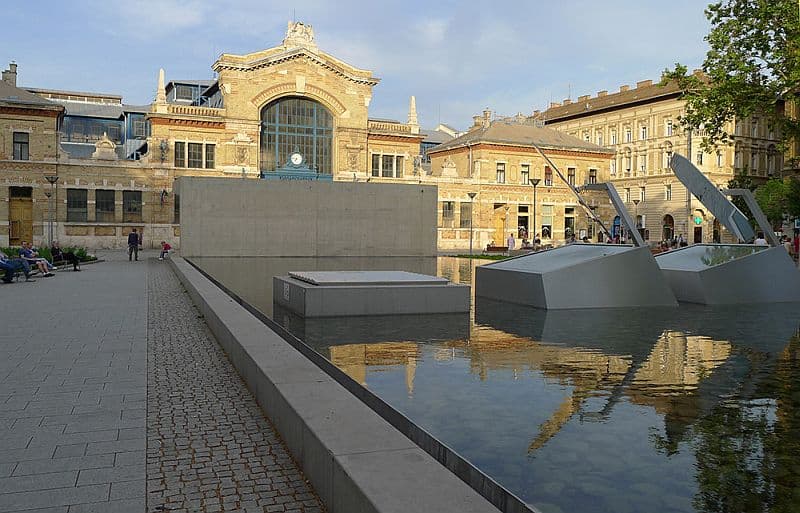
Rákóczi square nowadays. Photo: varosban.blog.hu
During the tedious process of political transformation after 1989, however, the 8th District has gone through a wave of modernization and gentrification. After Metro line 4 opened in 2014, the District has become more and more attractive to young people because of cheaper rents and by now it’s an area full of creativity and local initiatives.
Recently, Józsefváros gained international fame for a while thanks to Kate McKinnon who learnt Hungarian while on a shooting session in Budapest. On Saturday Night Live, she rapped a hit song called Yozsefvaros by Hungarian rap/hiphop band Animal Cannibals
The Tale of a City in the Capital City
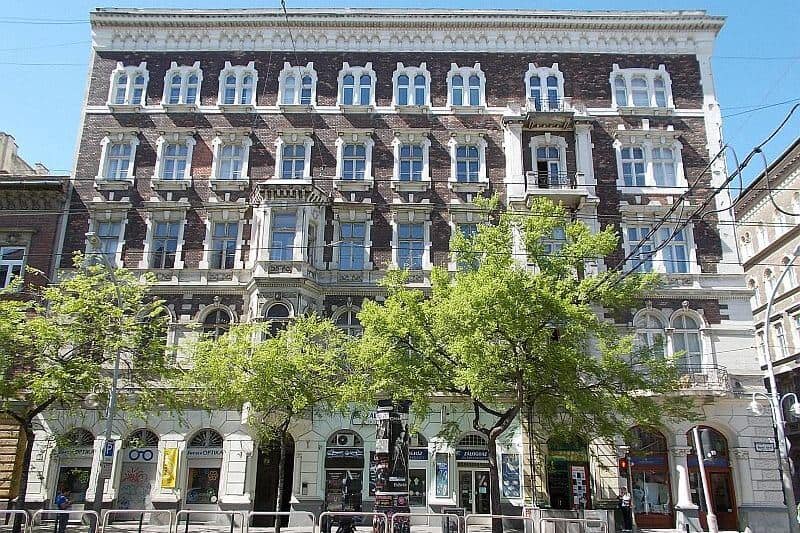
The Grand Boulevard in District VIII. Photo: wikimedia.org
First time visitors to Budapest are amused to discover that it iss actually two cities, Buda and Pest, and more precisely three, since Óbuda, Buda and Pest were administratively united in 1873, and the city’s first name was actually PestBuda. Doesn’t have quite the same ring, does it?
Unlike Vienna and many other European capitals, Budapest is a conglomeration of 23 cities called districts, each having a number, a name (like 8th District is Józsefváros i.e. Josephtown), its own elected assembly and mayor, and, most importantly, its own budget. The 8th District is not only one of the oldest and biggest districts of the city but the most varied as well. Check this article to get an overview of the districts of Budapest.
The sharp divide is the Grand Boulevard (Nagykörút). The fancy part of the district is called Palace Quarter, stretching between the Small and Grand Boulevards. The name comes from the magnificent palaces built by the aristocratic families and the nouveau rich of the time in the mid-19th century. Although the 8th District is not on the tourist map of Budapest, it can offer a lot for architecture freaks, history junkies, culture vultures and simply tourists who want to escape crowds and have a quiet moment in a relaxed atmosphere.
To name a few spots we are so proud of locally:
Apart from palaces, one the finest buildings is the neo-baroque Wenckheim Palace, housing the Budapest Metropolitan Library, the hidden treasure of Béla Lajta’s Art Deco grand work of Vas utca Trade School, or The Gutenberg House, a fine piece of Hungarian Art Nouveau.
Major historical spots include the Chapel of St Roch (Szent Rókus-kápolna) dating back to the 18th century. The fun part is to stand at the entrance door and when you look up you can see the water level mark of the 1838 Great Flood half a meter above your head. Actually, the flood destroyed most of the existing Pest but as with most catastrophies, it was also beneficial for the future development of the city since afterward buildings were more carefully designed.
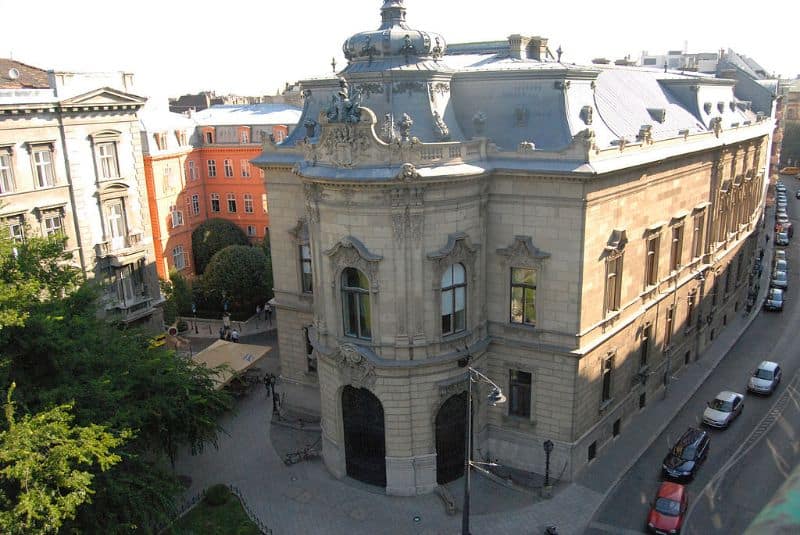
Budapest Metropolitan Library. Photo: wikipedia.org
To us Hungarians the National Museum is a historical relic since the 1848 Revolution was started here by Sándor Petőfi’s (our Robert Burns sort of national poet) igniting recital of the National Song. More recent history is commemorated by the moving plaques on the Magyar Rádió (Hungarian Radio) building in Bródy Sándor utca where the first shots went off on 23 October 1956 to start our Revolution and war of Independence against the Soviet Union. Another memorial place of the 1956 fights is the Pesti Srác (Pest guy) monument to remind posterity of the heroic fights those youngsters fought against the invading Russian army.
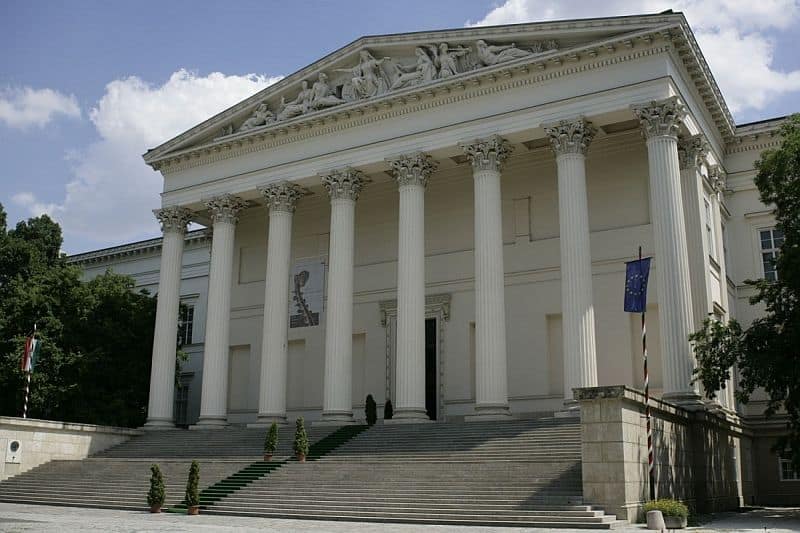
Hungarian National Museum. Photo: programturizmus.hu
What makes Budapest so attractive for at least eight months of the year is the abundance of terraces and cafés where you can chat and socialize while sipping a coffee, a shot of pálinka, our national liquid medicine, or a fröccs (spritzer). One of the most positive developments after the fall of Communism was urban planning in the interests of the locals. An excellent example is Krúdy street with its wide arrange of cosy bars and restaurants and NO CARS. The central part is Mikszáth tér, an architectural wonder reminding you of an Italian piazza with our great writer’s (Kálmán Mikszáth) cubist statue in the background.
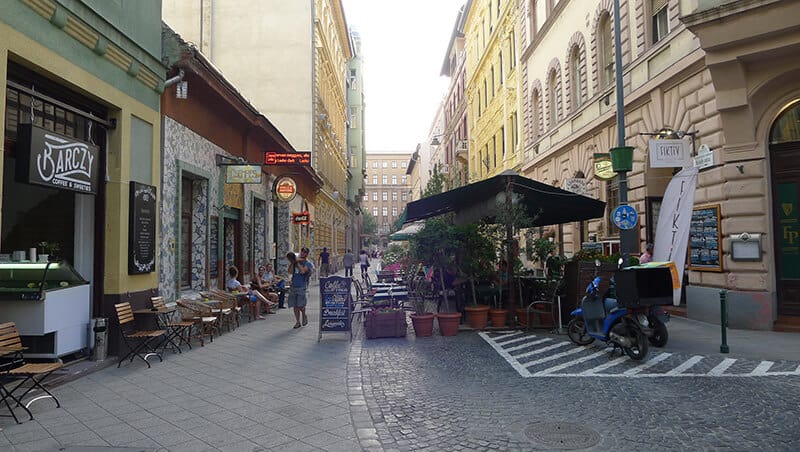
Pedestrian zone in District VIII (Krúdy Gyula street). Photo: varosban.blog.hu
The 8th District Vibe
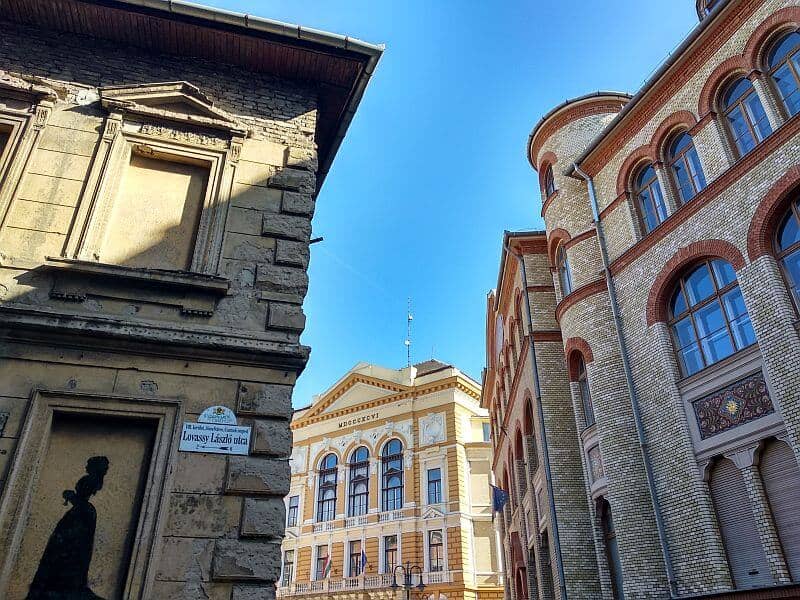
Tavaszmező street. Photo: budapestflow.com
No matter what people from the posher parts of Budapest say, the 8th District is a comfortable and fun place to live. It’s a village, especially for people like me who count as a native dweller. There is nothing like going to the local indoor market. Built in 1898, it’s the second-largest market after the Main Market near Liberty Bridge, and instead of spending the planned 10 minutes on your shopping, you’ll spend more than half an hour because you need to talk to the vendors, make puns and inquire about their well-being.
Join our walking tour of Budapest’s District VIII
Expolore local galleries, cosy coffee shops in a non-touristy neighbourhood of Budapest.
Very often, you bump into an old acquaintance and it would be a personal insult if you don’t invite him/her for a drink at nearby Csiga Café, renowned for its intellectual clientele and delicate food or, more probably, at the terrace of the Rákóczi restaurant just on the opposite side of the street. The latter, run by a couple, Gyuri and Erzsike, is a great favourite of the locals with a taste for traditional Hungarian cuisine. Should you have a more sophisticated palate and taste for choice wine, you can walk over to the Oinos Winebar & Bistrot 50 meters away. Mind the prices, though.
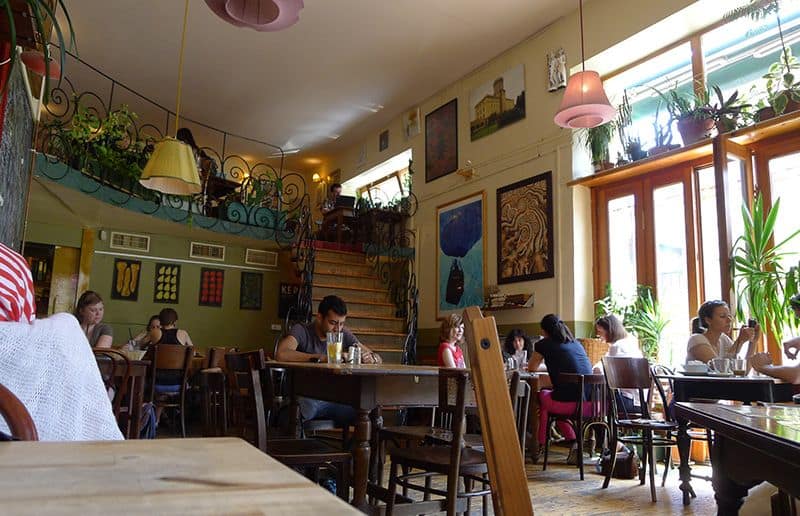
Csiga Cafe. Photo: varosban.blog.hu
Continuing our walk, at Német street 6, we bump into an enigmatic sign that says FERI. The puzzle is solved after entering to find the only feminist gallery in Budapest, squeezed into a space of 18 square meters. It’s the brainchild of Kata Oltai who left her high-prestige curator job at the Ludwig Museum to open her own gallery.
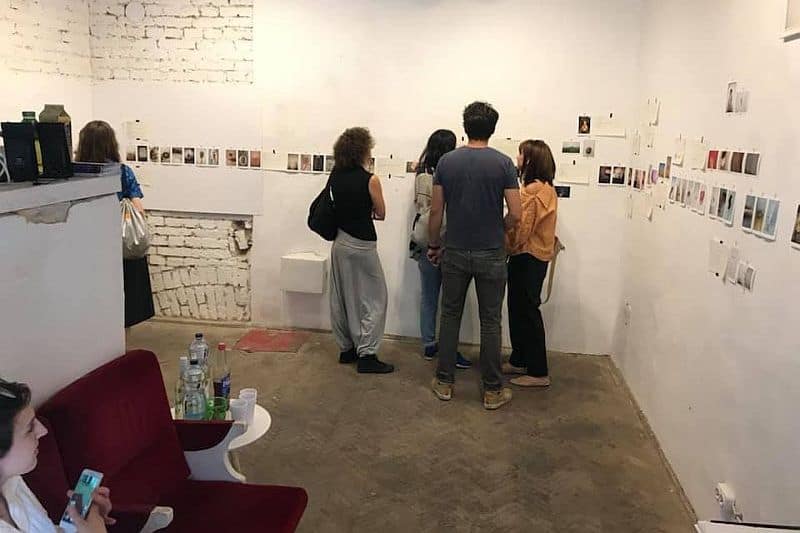
FERI- Feminist Project Gallery. Photo: facebook.com/FERifeministagaleri
Walking further we’ll reach József street. Only locals remember that it was the infamous ‘kocsisor’ (car row), referring to the bygone practice of sex-hungry men with a car leaning out of their cars to the spontaneously walking sex workers (in today’s PC lingo but then called simply ‘the girls’) to inquire about the price of their services.
The street has changed a lot to regain its pre-war decent middle-class atmosphere with a new, minuscule square where you can pay homage to the statue of Cardinal Mindszenty, head of the Catholic Church, persecuted by the Communist regime in the 1950s. He sought refuge at the American Embassy after the Russian invasion to crush the 1956 Revolution and stayed there until his release in 1971.
Further on, you’ll spot a butcher shop named Helal Kesím, to avoid using the customary designation of Halal Food. In Hungarian, halál means death, and it would not be a good omen to send Hungarians to buy their meat for the Sunday dinner there.
At the end of the street, you arrive at wonderful, peaceful square with trees, surrounded by a fence including a playground for children and benches for gossiping mothers. This idyll is misleading, though. Only ten years ago, Mátyás tér was one of the most dreaded places where decent people would not tread. But then came the Magdolna Project, a unique rehabilitation scheme with the radical innovative element of involving the locals by personal participation to gentrify their flats and close environment. In the formation of the little park, the locals decided what would be best and most needed for them.

Mátyás square. Photo: zoldkalauz.hu
The square also hosts Kesztyűgyár (the name ‘glove factory’ refers to its original function), a wonderful design by local architect György Alföldi, a key player in the 8th District rehabilitation project. Planned as a community space, now it’s under the auspices of the hard-liner local government and seems to have lost its appeal. When I visited last, the most exciting program was a table-tennis program for pensioners.
However, next to Kesztyűgyár, you will find a small terrace with five tables and 20 chairs and an unassuming sign saying Rauf Cukrászda (Rauf Confectionary), selling the famous ice-cream called Hysteria and unique pastries. Actually, the place is much more than a passer-by or accident visitor sees. The young couple who run it is typical examples of community builders in the district. Their minuscule gallery is full of quotations of the best Hungarian poetry and provides visibility for young talents. As the owner, Barbie says: “It’s small, unpretentious but it’s OURS.” After 5 minutes of talking to her, you regenerate even if you suffer from bad depression.
The last stop of this very concise segment of the 8th District is the AURORA complex, acquiring headline news recently due to the political pressure to terminate their activities in the district.

Courtyard of Aurora. Photo: 444.hu
Aurora is much more than a community space. I talked four hours to Daniel Mayer, member of the collective running the space, in the courtyard of this shabby place, trying to define what to call it, and I suggested AURORA AGORA. The community is an “NGO hub”, and they think of themselves as a “social enterprise.” It is governed by the rules of participative democracy, providing a clear alternative, as Dani puts it, to the ‘law and order’ policy of the right-wing local government.
Their activism to find alternative solutions to the social problems of the district like the issues of homelessness, drug addiction, and freedom of the press has become a thorn in the eyes of the authorities who use a wide range of Putinite administrative measures to make their operation futile.
Apart from having a cozy bar, the income of which finances their maintenance, they have all sorts of cultural programs. The complex also hosts several significant NGOs like Budapest Pride who annually arrange a month-long Pride month. They are working on building a network around the country, one example being Debrecen Pride, in the most conservative and thus homophobic part of the country.
Never underestimate the value of local knowledge
Note to travelling people looking for experience: The recent buzz word for travellers, replacing outdated words like tours, walks, etc. is EXPERIENCE. Even Viator, the almost monopolistic reservation system changed its name to Tripadvisor Experiences suggesting that you can buy an experience, the main purpose of foreign travel. Semantically speaking, however, I don’t think you can buy an experience. It takes two to tango. We can offer an opportunity to get an insight into real local life without INSTAGRAM-proof photos, and if you are open to the adventure, you WILL gain an experience.
We are most willing to share all the things we think are of value, letting the curious eyes of visitors peep into the ways of living we inherited in this culture. Welcome to District 8.
This is a guest post by Miklós Molnár. About the author: Miklós is a cultural historian, tour guide, founder and owner of Fungarian.
RELATED WALKING TOUR
Dive into Budapest’s District VIII filled with locals and offbeat cultural spots and visit authentic hangouts to learn about this upcoming and undiscovered neighborhood.


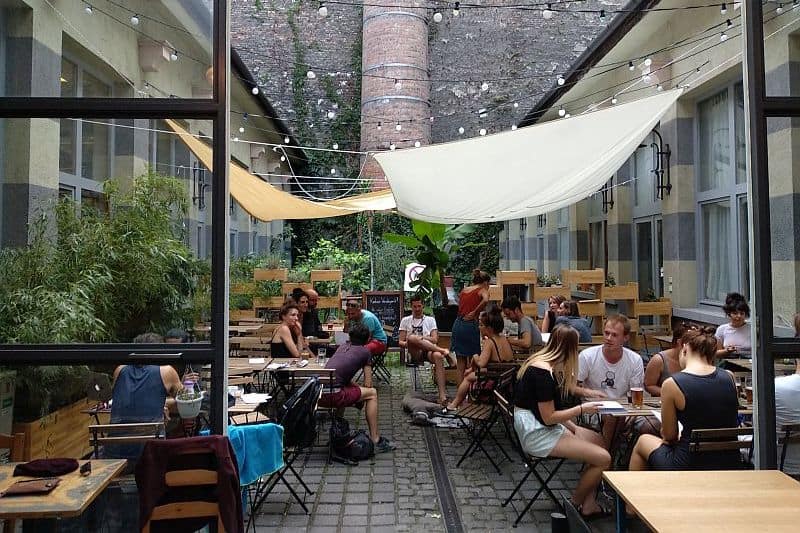

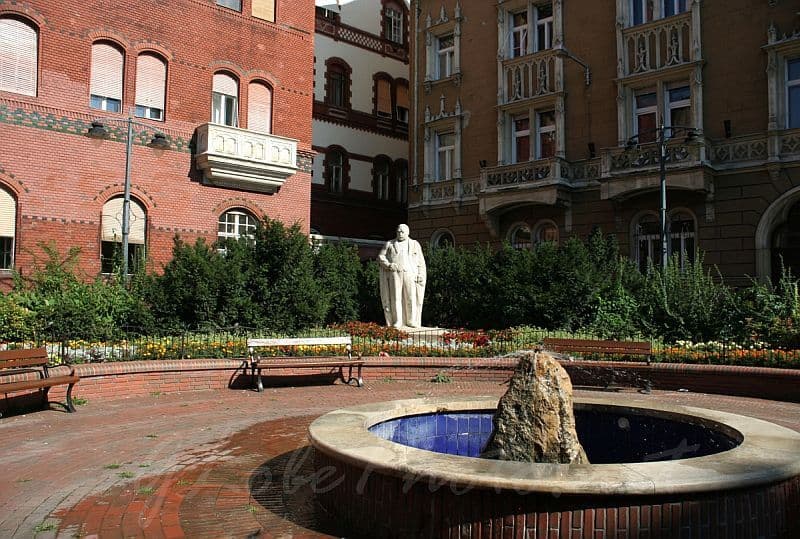
Sorry, the comment form is closed at this time.